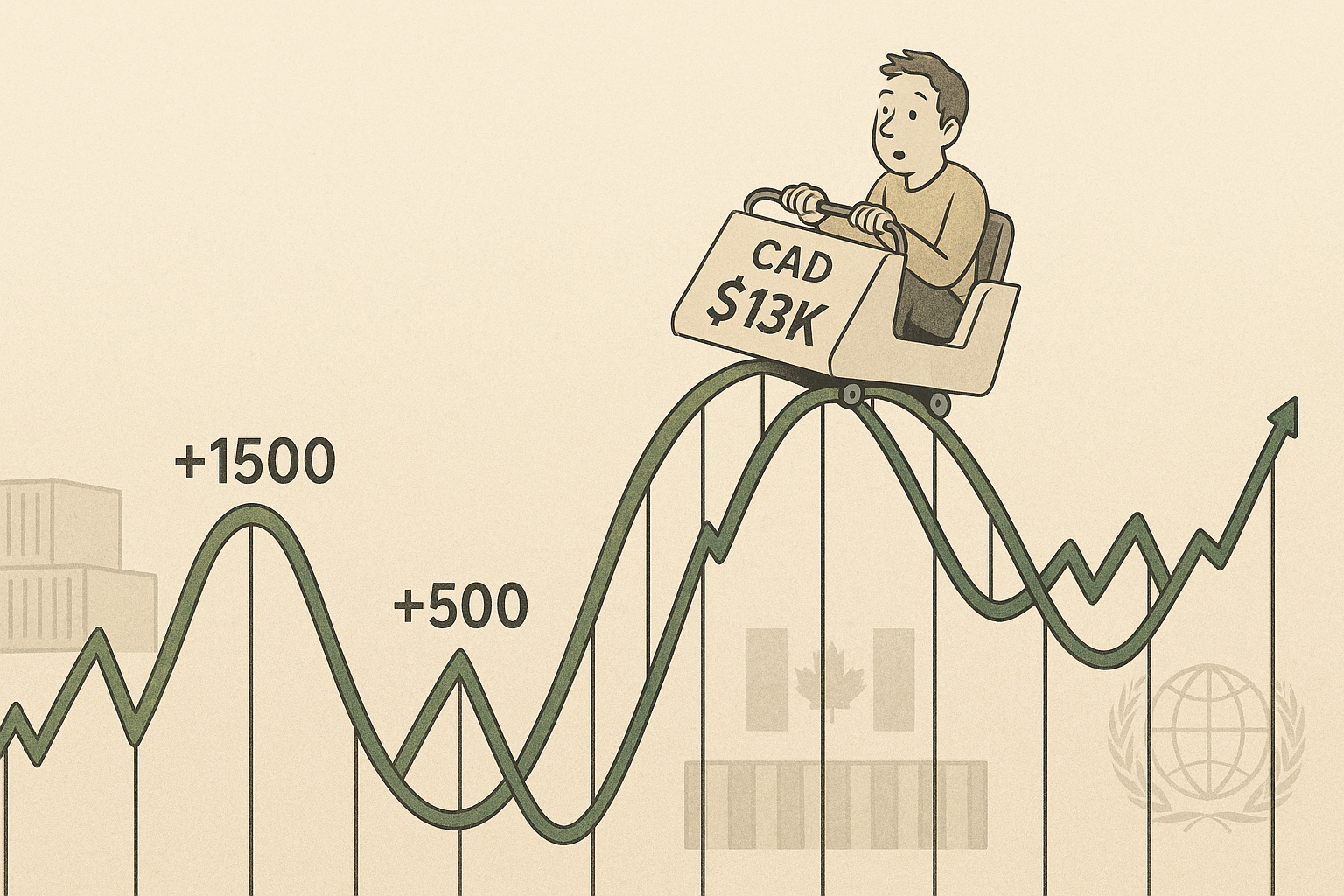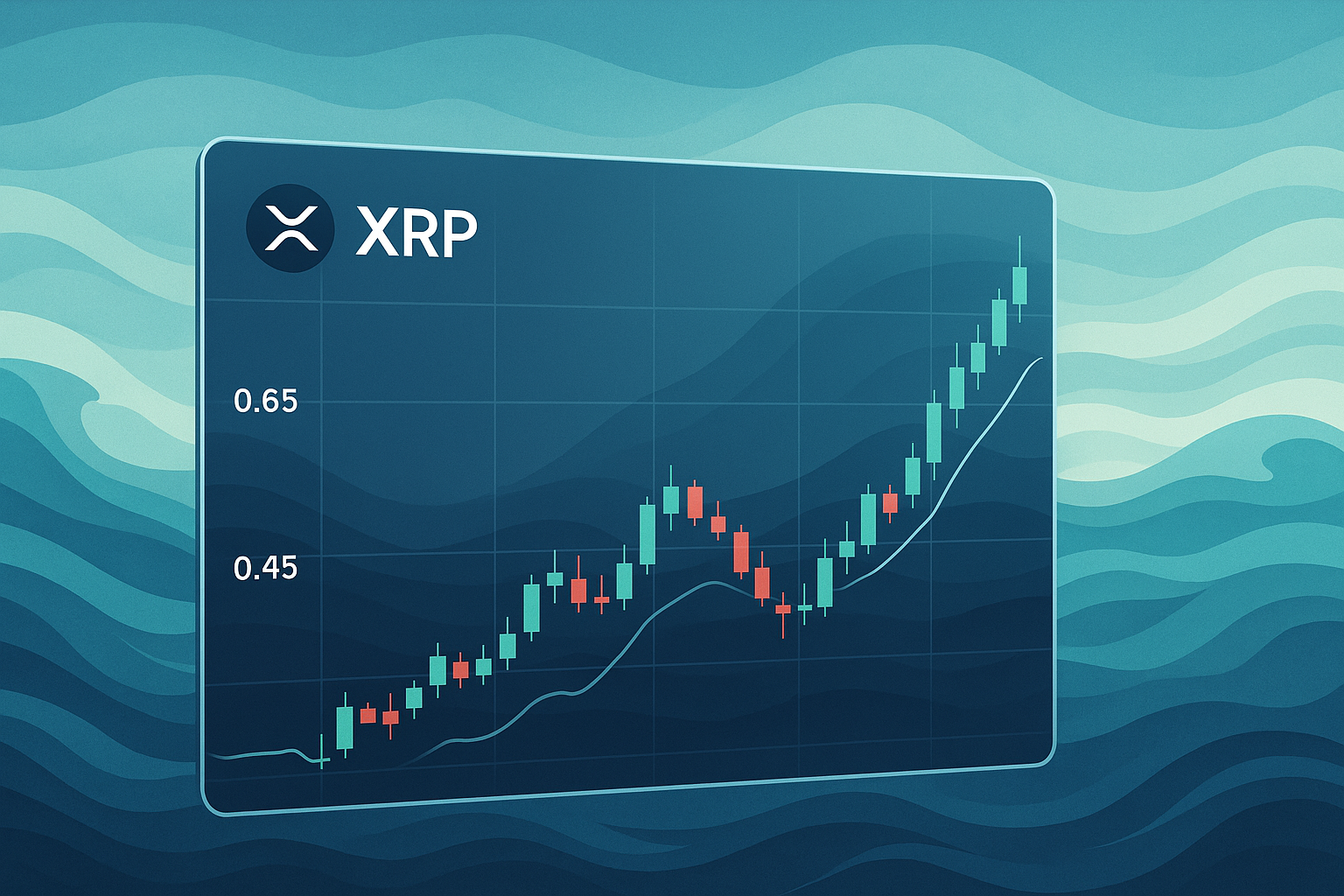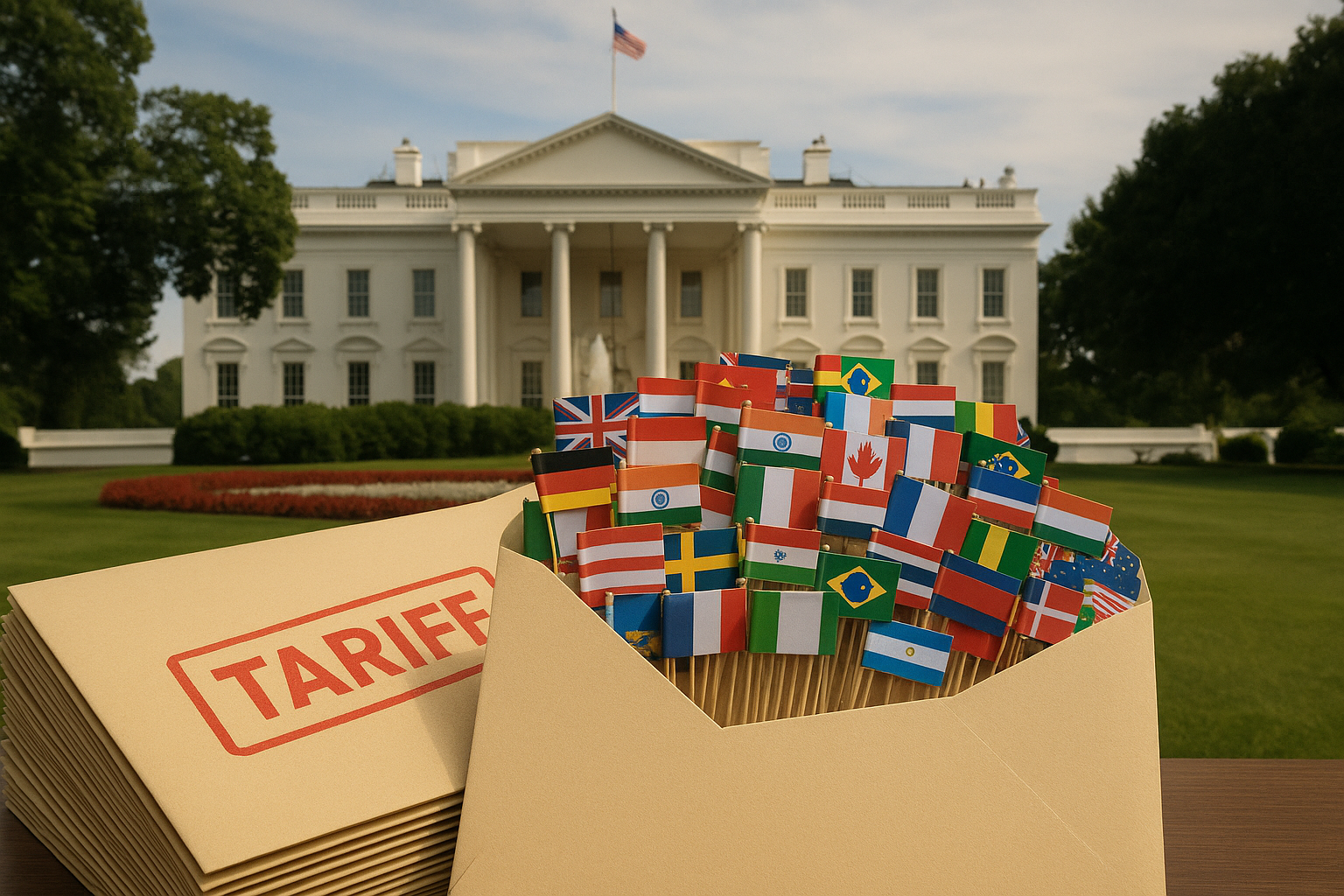You're up, you're down, and suddenly you're wondering if this investing thing is really for you. Sound familiar?
For one new investor, the market's recent mood swings have been a brutal introduction to the emotional whiplash that comes with putting your money to work. Their portfolio—a modest $13,000 CAD investment—had climbed to a promising $1,500 profit before plummeting to just $500 in gains after some political mumbling about tariffs.
Welcome to the markets, indeed.
I've seen this story play out countless times over the years. The initial euphoria of watching your money grow, followed by that sickening lurch when external forces—often completely beyond your control—sweep in to humble your portfolio and your expectations along with it.
What's particularly telling about this investor's situation isn't just the numbers themselves, but what they reveal about their approach. A $1,000 swing on a $13,000 portfolio suggests some serious concentration issues. Most well-diversified portfolios simply don't gyrate that dramatically on tariff talk alone.
"The market gives you plenty of opportunities to learn expensive lessons," as one veteran trader told me years ago over coffee. "The trick is figuring out which ones are worth paying for."
So what happened here? In all likelihood, this investor has loaded up on sectors particularly vulnerable to trade tensions—tech companies with global supply chains, manufacturers dependent on imported components, or consumer goods businesses with exposure to international markets.
The choice between investment strategies is stark. There's what you might call the "crockpot method"—low-cost index funds left to simmer for decades with minimal fussing—versus the high-wire performance art of picking individual stocks. One builds wealth reliably; the other... well, it makes for better cocktail party conversation, at least.
For Canadian investors especially (and our friend with the fluctuating portfolio is clearly investing in CAD), benchmarking against appropriate indices matters. The TSX Composite might be more relevant than American indices, though many Canadians have portfolios that straddle both markets.
Look, I've been covering personal finance for years, and if there's one thing I've learned, it's that most people dramatically overestimate their tolerance for volatility—until they actually experience it. That gut-punch feeling when you watch paper profits evaporate? That's valuable data about your actual risk tolerance, not the idealized version you imagined when times were good.
What should our tariff-traumatized investor do now?
First, a reality check: a $500 profit on $13K is roughly a 3.8% return. Not stellar, but certainly not a disaster either. They're still in positive territory, which puts them ahead of plenty of first-time investors who've blown up their accounts entirely.
Beyond that, there's some homework to do: - Examining sector allocations (overexposure is clearly an issue) - Honest assessment of time horizons (are they investing for next year or next decade?) - Calculating actual annualized returns against appropriate benchmarks - Serious soul-searching about risk tolerance
The boring truth—and I've seen this play out countless times—is that for most people, the best strategy is barely playing the game at all. Buy broad market indices, reinvest those dividends, tune out the noise, and let compound returns work their magic.
It's terrible cocktail party fodder. But it works.
That said, keeping a small portion (10-20%) for individual stocks can be both educational and occasionally profitable. The key is being honest about whether you're truly investing... or just gambling with a fancier narrative.
The market, after all, doesn't care about your feelings. Or your tariff tantrums.



